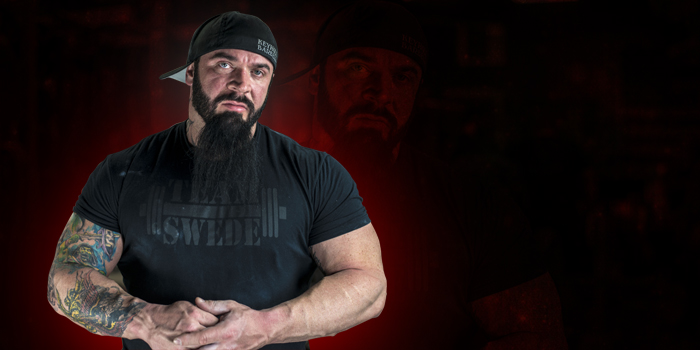
I’ve often said that a movement like squatting should not be very difficult for a human to learn. I’d think, at least at one point, it was among the most natural and necessary movements for our species. We would squat down and work, squat around a fire at night and talk, or squat behind a tree to evacuate the colon.
Almost every baby comes out of their mother instinctively knowing how to squat, and using decent mechanics, too. The deadlift—AKA picking something up from the ground—is not a far cry behind, as a matter of course, in terms of being innate, instinctive, and necessary for survival. Bench pressing, on the other hand, is a can of worms, being the most unnatural and difficult to master, technically. But some of us are so off-track with the first two that it’s basically a level playing field.
The problem with the two that should be easy arises as a result of the birth of civilization and the millennia of technological advances that ensued from there. We have chairs, cars, cranes, and forklifts. Most of us sit on our asses, on those chairs, about 12 hours per day. We’ve lost the basics. Every generation we lose them again. But fear not, it’s an easy fix as long as we don’t overcomplicate what should be a very simple process to learn.
RECENT: A Day in the Life of Swede Burns
This is where corrective technical cues come in.
Everyone can benefit from technical cues, with the contingency that they are employed properly, consistently, and under the correct circumstances. This is not a groundbreaking concept. People have always used cues, but mostly, at least from what I’ve seen, they’ve done so ineffectively. So much so that many lifters are convinced they are a bad idea. I’ve actually started running into this more and more.
“Oh, I’ve tried using cues and it throws me off.”
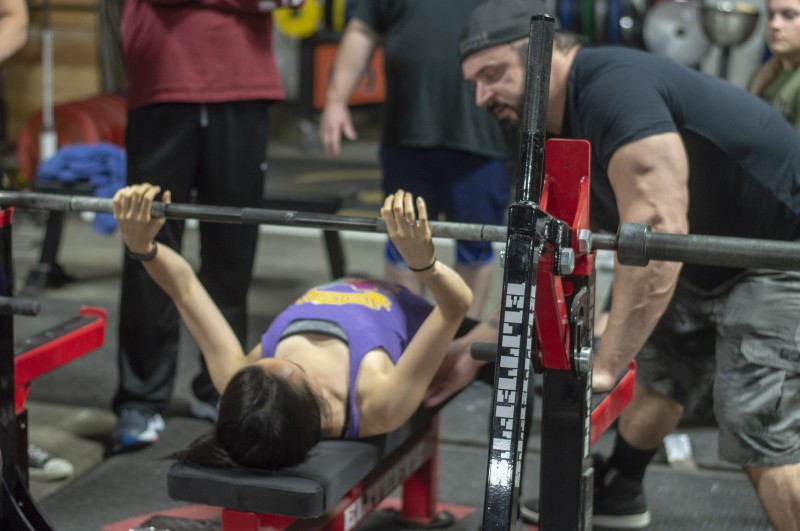
Yes, because you are so unique and special.
To me, this is tantamount to saying you’ve tried training to get stronger and it didn’t work for you, so you're writing the idea off altogether.
It does sound simple enough a thing, but a good number of people who work as coaches or even just try to give back by helping other lifters, while their motives may be good, lack the patience or skill set to teach much of anything effectively. This is where cues get a bad rap. Screaming random, confusing words or phrases at someone while they attempt a max lift will usually do more harm than good. Most of us have had a taste of that and figured out the obvious of ourselves, quickly. But I assure you, there is a better way. I am going to explain exactly how to do it, but first, let’s look at what cues really are. Then we can talk about how to implement them efficiently.
Cues are shortcuts or keywords. They are abbreviated instructions for your body, used to modify and improve a given movement pattern. They work the same way cue cards do: repetition and reinforcement. For a cue to be useful, it should make a something that may be a complex process easier to understand or execute by placing the majority of our focus on that very specific modification.
A cue can be repeated, silently, in your head as you execute it during a movement. It can be verbally cued for you by a training partner, if you have trouble thinking about it during the lift, at first.
There are good cues and bad cues, for sure. The cues, themselves, can be poorly formed, which presents another set of issues, where it seems like the cuing is the problem, but in reality, the choice of cues being used and how they are being applied are the stumbling blocks. A phrase that makes perfect sense and really clicks for one person may not for someone else. Different strokes for different folks, as it were. So it’s important to have multiple means of cuing for the same desired result. I’ve compared notes time and again with good coaches in other sports and even in powerlifting, and the consensus is that it’s best to load your arsenal with multiple options for cues that have the same desired result.
I’ve found the cues I employ most frequently, the primary cues, to work with maybe 85% to 90% of the lifters I coach with little more than a brief explanation of the desired result and maybe a visual aid, providing an example of the cue being used. For online coaching, I have a series of videos demonstrating the use of each cue. In the cases where even visual aid and explanation do not seem to get it done, I use a secondary set of cues. There is more than one way to skin a cat. (Please don’t skin a cat.)
I’ve never worked with someone I wasn’t able to help by prescribing cues to focus on from session to session, and I have run into just about every problem you could fathom via the literal thousands of lifters I have coached, either in one-on-one online coaching, training on my team, or hands-on in a seminar setting. But things didn’t always flow so smoothly.
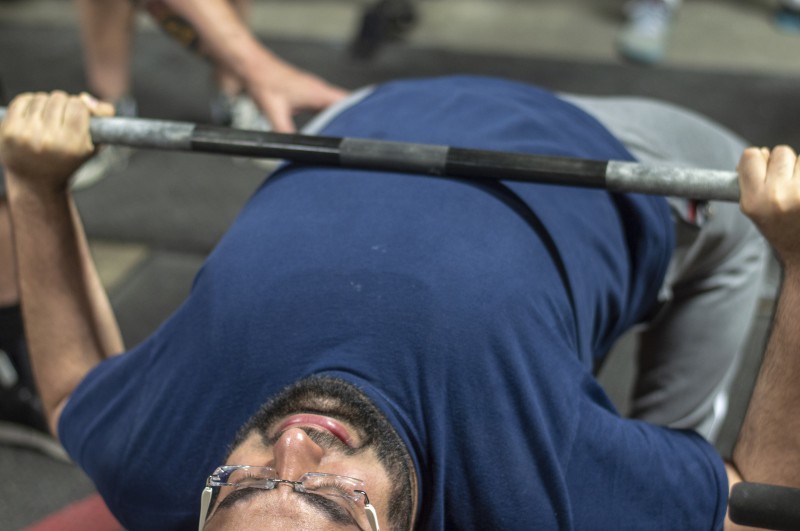
The cuing systems we use now are a result of over 15 years of logical trial and error. I don’t believe there is a better way to do it, or a simpler index of cues than what we have put together, but I will always remain open to that possibility. Staying open to new information has allowed me to learn as much as I have to this point.
As I mentioned earlier, I use the same system of corrective cuing in online coaching that I developed working with lifters in person throughout my career as a coach.
It’s been my experience that a very small minority of lifters will ever be able to cue or reinforce technical corrections effectively while under loads exceeding 90% of their one rep max. Anyone who tells you otherwise, assuming they are not a beginner, is likely very gifted in terms of talent, and so they expect you to just work harder and be like them. Kind of an absurd proposition, if you ask me.
If you do fit into this group, my hat is off to you. You’re probably somewhere on the far right side of the bell curve and you will do well regardless of how you train, as long as it’s heavy enough and progressive.
However—and this is the thing—even if you are in that group, you’d still do better training between 70% and 85% of your max for your main work, at least most of the time, meeting volume requirements and focusing on drilling technique with cues. Doing so will allow you to last a lot longer and continue to make the foundational improvements, year to year, which will eventually allow you to reach your potential. I think this much is manifest if you take a look at any lifter I’ve worked with for an extended period of time.
Before I go too much further, let’s back up and look at exactly how this should be set up. The first thing is to start with a good, proven cue. I’m not going to provide you with a list of specific cues to use for each issue here, though we do have a very thorough index included in the curriculum for our 5thSet Coaching Certification. Rather, I want to focus on giving you the tools to be successful in implementing any effective cue.
What makes a cue effective?
For starters, it should work like a shortcut that kind of tricks the lifter’s body into doing what we want it to, without throwing everything else off. A really good cue can fix multiple issues, just by continuing to reinforce it.
An example of an awesome cue for the bench press might be my “heels to traps” cue. It protects the lifters shoulders, improves elbow tracking, and enables the lifter to use leg drive with efficient transfer while also keeping their butt on the bench. How’s that for killing multiple birds with one stone?
Once we have selected the appropriate cue to correct a given lifter’s technical issue(s), the next question is: how do we best apply it?
The first thing to consider is that we don’t want to overwhelm the lifter with too much to correct at once. So it’s best we limit corrections to one or two related cues at a time. Then we can build from there.
Keep in mind that applying a cue changes a preexisting movement pattern. That’s the whole point, right?
Right. So understanding that, things could very well get harder after adding the cue, at least until you’re able to “grease the groove” of the new movement pattern. This is normal. You may experience it for a few sessions or not at all. Either way, the end result is the same: better movement.
With 5thSet, we use a layered system of coaching, based on a hierarchy of importance. Technical flaws that put the lifter in danger need to be addressed and corrected first. From there we move on to tech corrections that improve the mechanical efficiency of the movement. For the sake of this lesson, let’s say the lifter had an issue with excessive lumbar extension on the bench press, which put them at risk for S/I joint and other lumbar issues. (I’ve covered this problem in a previous article.)
Now let’s say we have already made the adjustments to correct that issue according to the hierarchy of importance (safety over efficiency), and now the lifter is ready to move on to issues with mechanical efficiency.
The lifter is still having issues with getting high enough on their traps to maintain good thoracic extension under a loaded bar, which would allow the scaps to safely move the way they need to during the press. Also, their leg drive is not effective, and bar placement is all over the torso.
Simply learning and reinforcing the “heels to traps” cue, along with cuing “reaching” for the bar with their chest will eventually solve all of these problems. Like I mentioned before, applying these cues under a load in the neighborhood of 90% of the lifter’s max is probably not the best idea. But starting with even 70%, before the lifter understands the physical information involved in applying the cues, is still not the ideal.
I have them start with the bar. I don’t care if they do four or five sets with the bar while warming up in the subsequent session, just reinforcing and learning the cues and how they feel. From there, it’s a matter of preserving the cues and reinforcing them as the load increases.
It won’t take long to get the lifter in the 70% or higher range, while still adequately implementing the cues. Usually within a couple of weeks. Then it’s just a matter of meeting strength volume requirements (Prilepin) in that effective percentage range.
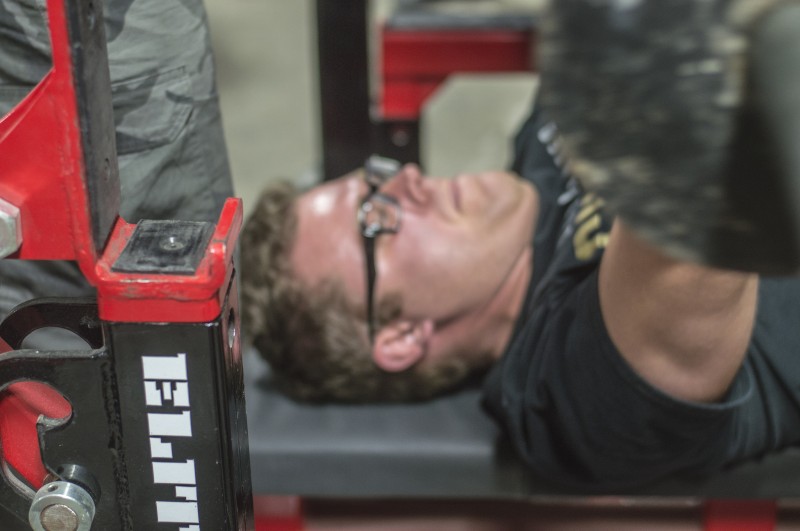
Doesn’t sound like much, but it’s a process that can sometimes take two to three months to really manifest dividends. It doesn’t always take that long; some people are able to integrate cues overnight, but with most, it is a process of gradual improvement. Either way, if the lifter is consistently implementing the cues in training and meeting volume requirements in the 70% to 85% range, they will be able to carry those improvements over into peaking cycle training at over 90% of their max and certainly onto the platform.
That sort of mechanical efficiency is the reason my lifters often get accused of sandbagging and leaving too much on the platform. People are used to seeing convulsing and bleeding during a platform PR, as sad as that sounds. And when they don’t see the lifter falling apart, they think something is wrong. This is powerlifting, not the fucking colosseum. I’ve yet to see some blood-soaked competitor win a meet by plunging a sword behind their rival gladiator’s chest plate. But, like I said, I’m open to new things — so maybe one day.
We have covered how to select cues, how to determine the order in which tech issues should be fixed with cues, how to implement and layer the cues, and now finally let’s talk about when we should absolutely not throw new cues at a lifter.
While they are indispensable tools for coaching a lifter in their training, some cues are not the best in competition. An example would be any that they are not already familiar with. A cue that a lifter doesn’t fully understand can actually hurt their performance in competition. It’s possible to help beginners at meets with cues they’ve never tried before, assuming they are very easy to understand and implement, but for an experienced lifter they can be a recipe for disaster. This comes back to the idea that it’s very difficult to correct technique under a max load, and dramatically changing anything in competition can result in a safety issue and send the lifter’s risk for injury into the stratosphere.
This usually comes down to coaches or wannabe coaches trying to cue lifters they don’t work with as a means to generate business. If you’re going to do that, you’d better keep it pretty simple and stick to helping beginners. This is for the reasons I’ve already explained above.
If I can’t understand what you’re trying to cue and I don’t have any weight on my back, I don’t think anyone is going to be able to figure that shit out under a max load — no matter how loud you scream it.
In training, we learn the cues. In competition, we use them naturally.
This is a topic I could write an entire book about, and I’m working on that. For our purposes here, I think this is sufficient. Hopefully, you found this helpful. If you did, please share it on your social media and save the link to refer back to later.










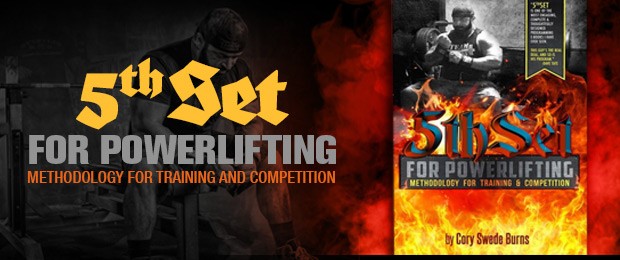
2 Comments